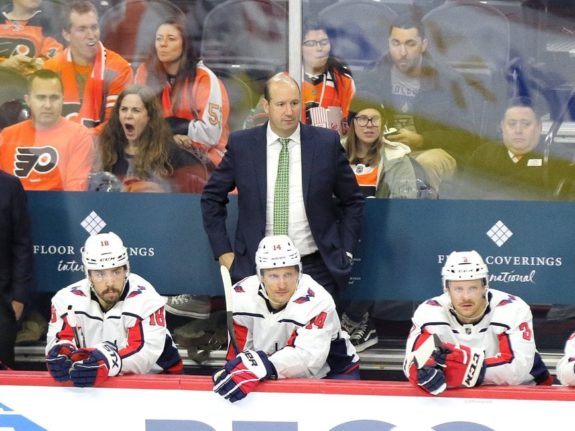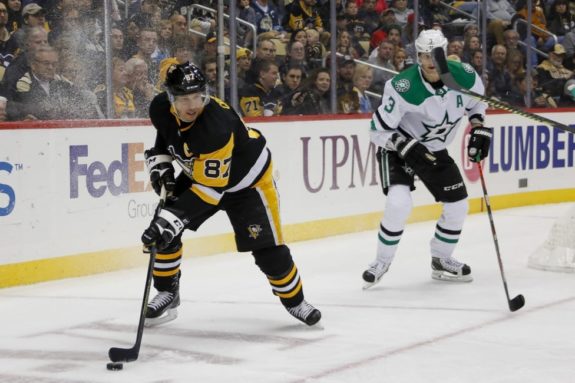There are only 56 regular-season games for teams to work with in the upcoming 2020-21 NHL season. Because of this, every game, period, and shift increases in value. If a team starts slow, they’ll have less time to catch up. If a player gets injured, their absence will be more pronounced. If a team’s power play heats up or cools down, that could be the difference between the playoffs or the lottery.
The Pittsburgh Penguins are no strangers to the value of special teams play. Having multiple dynamic players for over a decade tends to help a power play succeed, after all. Additionally, the Penguins’ penalty kill has gotten stronger each of the last 3 years, topping at an 82.1% success rate in 2019-20. However, after having the best power play in the league in 2017-18, the Pens slipped to 16th in the league in 2019-20. These trends continued in the Toronto bubble, with the Pens shutting down every power play they faced while only scoring on 17.7% of their own opportunities.
While those numbers came from just a 4-game sample size, they are further evidence that the Penguins’ power play is being extinguished. For the team to compete in the newly-formed and monstrous East Division, they will need to turn their power play back into one of the more lethal units in the NHL. Every special teams’ opportunity will matter much more than in seasons prior. The Penguins believe they are in a good position going into the season. So what have they done to help solidify their units?
The Hiring of Todd Reirden
Todd Reirden, a previous assistant coach in the Penguins organization, is returning to Pittsburgh after serving as an assistant and head coach of the Washington Capitals. Reirden has been a power play wizard wherever he has been in the NHL, getting the most out of talented players, such as Sidney Crosby, Alex Ovechkin, Evgeni Malkin, John Carlson, and Kris Letang. In his 2010-2014 stint with the Penguins, Pittsburgh scored at a 20.3% clip on the power play, 3rd in the league during that time span.

When he moved on to Washington, he remained a strong power play strategist. In his 6-year tenure with the Caps, Washington scored on 22.2% of their power plays, 2nd only behind the Boston Bruins’ 22.6%. He designed a top unit that had multiple strengths and didn’t solely rely on Ovechkin’s slapshot from the left faceoff circle.
Under Reirden’s eye, Carlson became an elite power play quarterback from the blue line. T.J. Oshie evolved into a terror in the slot area while Ovechkin and Evgeny Kuznetsov worked well off each other. Reirden molded a unit that scored on nearly 30% of their man-advantage opportunities during the 2017-18 playoffs, which they rode all the way to the franchise’s first Stanley Cup.
Now, after failing to find the same level of success for the Caps as their head coach, Reirden is returning to a role he thrives in. If his schemes and player placement can help the Penguins catch fire for even 20 games, he’ll have the chance to help another team compete for a Cup again.
The Return of Potent Personnel
The power play power outage, especially in 2019-20, may have been a symptom of misfortune rather than a symptom of poor coaching or play. Pittsburgh had a well-documented plague of injuries last season, which inevitably damaged their ability to thrive on the power play. The units Mike Sullivan had to put on the ice were similar to a round of whack-a-mole: constantly changing and constantly getting bonked around. Better health should be a boon to the 2020-21 Pens.
It all starts with Crosby (big shocker, I know). The generational talent played only 41 games in 2018-19, limiting his ability to push the team in the right direction. Malkin performed admirably during Crosby’s absence, but he also missed games, playing in just 55. Having both players healthy to start the new season is invaluable to the Penguins.

The team will also get a boost from a healthy Jake Guentzel and Kris Letang. Not to mention, Pittsburgh added scorer Jason Zucker last trade deadline, and he could be a helpful asset on the power play. Bryan Rust, Marcus Pettersson, and John Marino came into form last season, so they could also have significant roles in the power play’s revival. The loss of net-front beast Patric Hornqvist will be difficult to replace, but if anyone can find a solution, it’s Reirden. At least to start the season, the personnel the Penguins are working with appears to be the foundation for an increase in 5-on-4 production.
The 2020-21 season will be an unprecedented one for the NHL. Teams will have to navigate circumstances unfamiliar to them and exploit any strength they can to stay ahead of the competition. For the Penguins, their path to success may be through the man-advantage. They have been a dynamic team for over a decade and have the chance they can continue that success.
But as Crosby, Malkin, and Letang continue to age, Pittsburgh better hope that the power doesn’t go out.